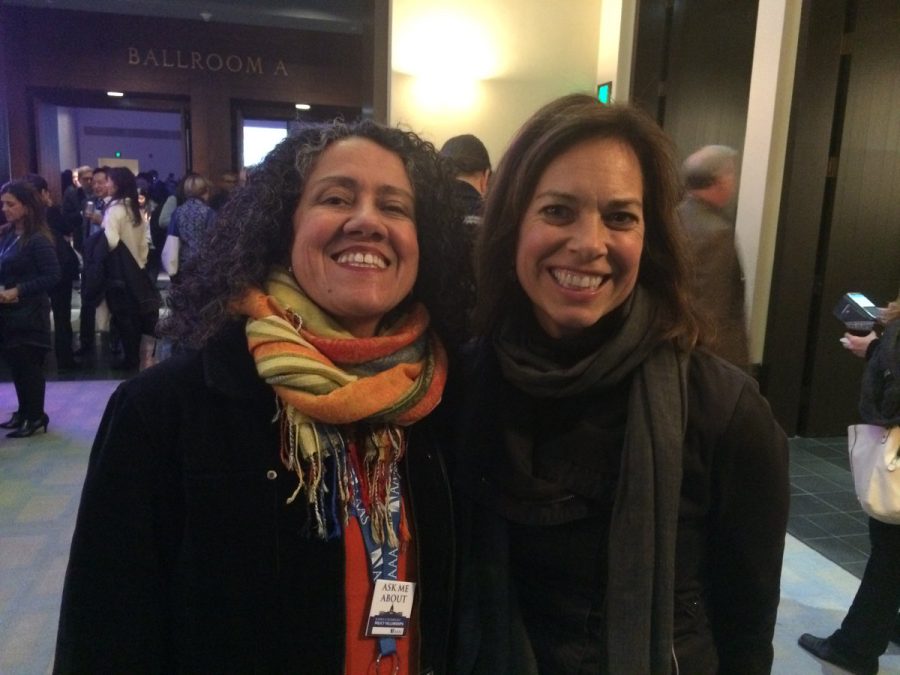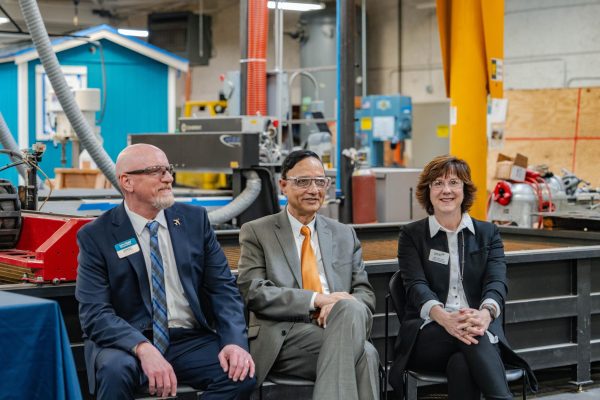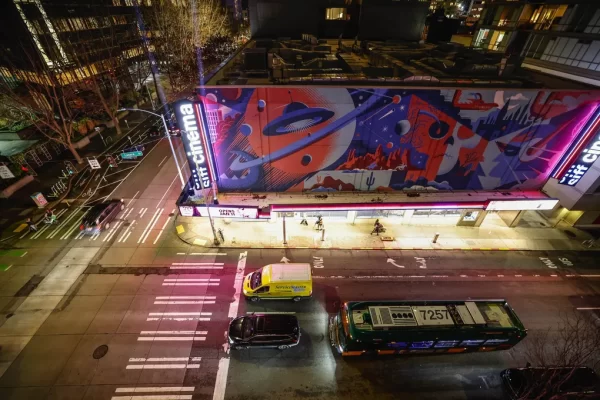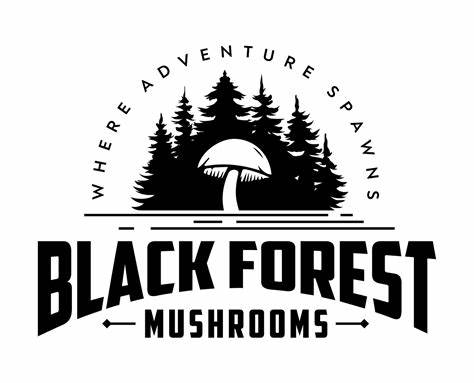Climate experts empower ‘citizen scientists’
Dr. Astrid Caldas (left) poses for a photo with Lisa Palmer (right) at the 2017 American Association for the Advancement of Science annual meeting.
March 13, 2017
Our planet’s biodiversity is dwindling at an alarming rate. Global warming threatens the stable equilibrium of climate and ecosystems worldwide, and humans are its prime contributor. What can we do to reverse its adverse effects?
“Get informed and involved,” Dr. Astrid Caldas, a climate scientist for the Union of Concerned Scientists, advised in an email interview.
Dr. Caldas recently visited Seattle for the the 97th American Meteorological Society (AMS) Conference from January 22–26. More than 4400 educators, students, scientists and professionals gathered to discuss weather, water and climate topics.
Dr. Caldas has a personal connection to EdCC: She and biology professor Gwen Shlichta shared the same laboratory at the University of Maryland when Shlichta worked on insect ecology.
Dr. Caldas’ advice applies to students in all disciplines. Opportunities to take part in vital research abound, even for those who aren’t on a scientific career path.
This spring Shlichta is teaching a course on marine biology (BIOL 106) specifically for non-science majors. The class will include field trips to the beach and a marine laboratory. Shlichta wants students to “get outside and have fun while they learn.”
The idea of everyday people taking part in scientific projects, termed “citizen science,” has deep roots in the late Renaissance, when amateurs, gentry and self-funded innovators conducted most scientific research.
Current technology has increased the visibility and variety of scientific projects available to anyone with an internet connection. Some of them are even computer games.
In “Phylo,” an online game developed at McGill University, players move colored blocks on the screen to match patterns and further genetic research. In “Martian Map Room,” players count craters and tag Rovers to help NASA scientists map the Red Planet.
A complete list of the games is available at http://www.citizensciencecenter.com/citizen-science-games-ultimate-list/.
The Citizen Science Alliance (CSA) developed the Zooniverse (www.zooniverse.org), described on the project website as “the world’s largest and most popular platform for people-powered research.”
Volunteers can observe and answer questions about images of galaxies, historical documents and videos of animals in their natural habitat.
A similar project is Global Xplorer° (www.globalxplorer.org), launched by self-described “space archaeologist” and National Geographic Fellow Sarah Parcak. Participants view satellite images to locate looting sites of historical and archaeological importance.
Whether enrolling in a new class or gaming for science, college students can take practical steps to get informed and involved, as Dr. Caldas suggested. Read on for the full interview:
Tara Pegasus: The current political administration seems to dispute the reality or magnitude of climate change. Having been part of the AMS Annual Meeting in Seattle this year, how would you characterize our climate situation?
Dr. Astrid Caldas: Our climate situation is dire. We are almost running out of time to act in a meaningful way, so as to prevent catastrophic consequences in biodiversity, crops, and sea levels.
Research comes out all the time on climate science, confirming time and again what has been already confirmed time and again: the globe is warming, and humans (through carbon emissions) are the main cause.
Is there any new research on this you would like to share?
Many studies nowadays deal with possible scenarios for animals, plants and sea levels. Just this January, a new study was released by NOAA [the National Oceanic and Atmospheric Administration] with new projections for sea level rise through the end of the century. Needless to say, these new projections put the sea at a much higher level than the previous projections from 2012, which were used in the National Climate Assessment.
Another field that sees many new studies deals with interactions of species, and how that, together with changes in climate, can interact to define where species will decline and where they will persist.
How can students sift through alternative facts and mishandling of data by the media to gain a better understanding of current scientific research?
The only media news sources feeding alternative facts to the public are those with connections to the conservative and the oil lobby – and even then, not all of them.
Scientific facts have for a long time been “cherry picked” to show just part of the story – the part that benefits those doing the cherry picking.
That is why some allege that there has been a warming pause, others allege that there was a cooling of the atmosphere, etc.
They do that by ignoring the most basic concept, which is that of a trend. A trend is not a constant line in the same direction.
Think of the stock market – it goes up and down day by day, it rarely goes only up or only down repeatedly, but analysts still see a trend of a bull or bear market. It is the same with climate and global warming: Temperatures fluctuate up and down, but those ups-and-downs are creeping up steadily.
What scientific news sources would you recommend?
One should always look for reliable scientific media, such as Scientific American, or the editorials and commentary in journals like Science and Nature. Most mainstream media also report accurately, especially public radio and TV.
The main thing to do is never, ever, believe just one source of information – especially if it is Facebook or Twitter.
If you read something, research it and find out if all sources corroborate it. Watchdogging is so prevalent nowadays that as soon as one piece of fake news hits the air, many pieces come up discussing it.
What is your advice to students who are concerned about climate change? What can we do now, in college, to tackle this problem?
You can get informed and involved.
You are at institutions of higher education, so your libraries are full of good, reliable materials. Organize student discussion groups around issues of climate change, go to public lectures and seminars – many are free.
Organize town halls to discuss climate change with town leaders and elected officials, invite an expert to speak. Volunteer at an academic lab that works with climate change.
Do your own personal emissions reduction program by using more public transportation, biking, using less packaged stuff, eating local, and using less water and energy at home.
Being a “smart phone activist” is not enough – you’ve got to go out there and act. Most of all, contact your representatives about legislation that is a direct or indirect attack on science.
And remember that science is always evolving, and “uncertainty” in science does not mean ignorance or even doubt about the facts, it means that there is a range of possible outcomes, all of them in agreement with the same conclusion.
Like in climate change, we know for sure that it will get warmer. What we don’t know is by how much, because it depends on our actions and the actual emissions dumped in the atmosphere. But it is pretty clear that it IS getting warmer, and exactly because we don’t know the magnitude of future warming, we must act now to be prepared for whatever warming happens.
In addition to earning two master’s degrees from two countries and a Ph.D. in ecology from the Universidade Estadual de Campinas, Caldas has consulted on projects with the Smithsonian Institution, the National Socio-Environmental Synthesis Center and other organizations. She blogs regularly for The Huffington Post and focuses on climate change adaptation with practical policy implications for society. Her blog is available at http://blog.ucsusa.org/astrid-caldas.











